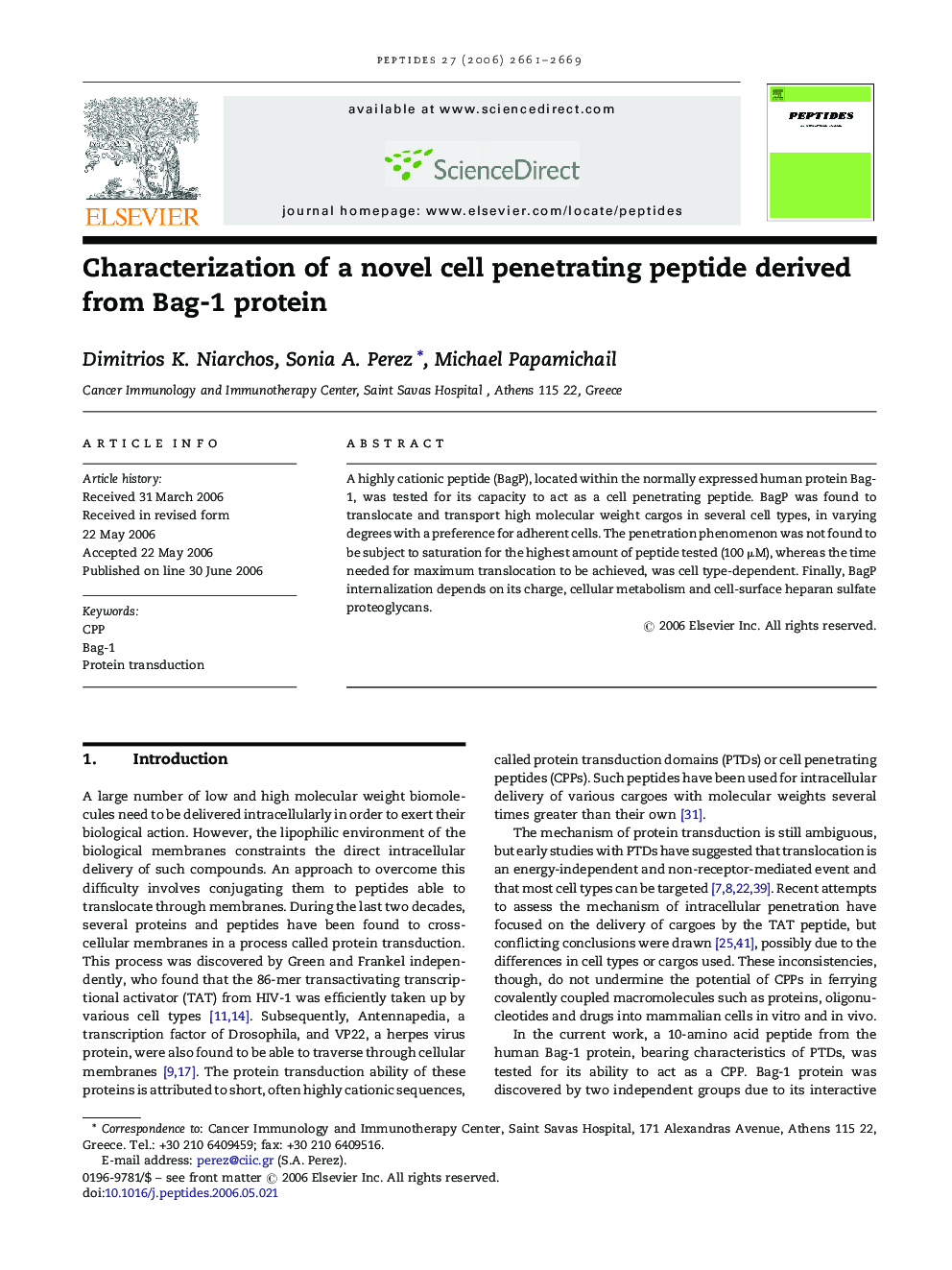| Article ID | Journal | Published Year | Pages | File Type |
|---|---|---|---|---|
| 2007819 | Peptides | 2006 | 9 Pages |
Abstract
A highly cationic peptide (BagP), located within the normally expressed human protein Bag-1, was tested for its capacity to act as a cell penetrating peptide. BagP was found to translocate and transport high molecular weight cargos in several cell types, in varying degrees with a preference for adherent cells. The penetration phenomenon was not found to be subject to saturation for the highest amount of peptide tested (100 μM), whereas the time needed for maximum translocation to be achieved, was cell type-dependent. Finally, BagP internalization depends on its charge, cellular metabolism and cell-surface heparan sulfate proteoglycans.
Keywords
Related Topics
Life Sciences
Biochemistry, Genetics and Molecular Biology
Biochemistry
Authors
Dimitrios K. Niarchos, Sonia A. Perez, Michael Papamichail,
